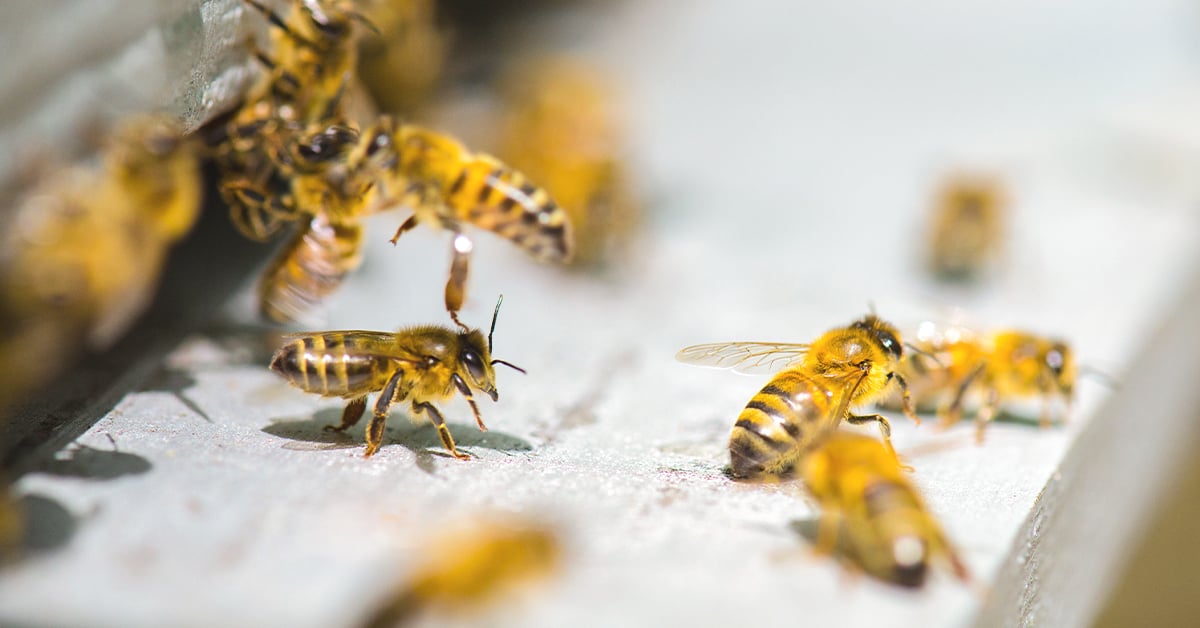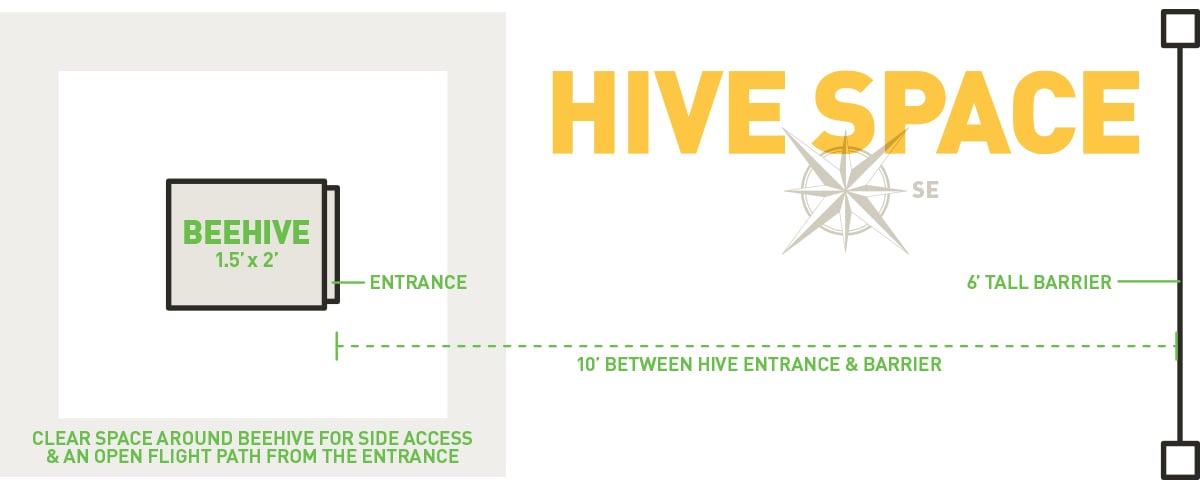
While the most common reason for keeping bees is the production of sweet, delicious honey, the increased pollination of fruit trees and vegetable gardens is actually a tremendous benefit to your neighborhood. Your neighbors will thank you. Keeping bees will also help you feel more involved in nature and agriculture without a daily commitment.
With that in mind, here are some simple suggestions for how to create the ideal spot for your new, productive beehive.
The Space and Place for Your Hive
Start by identifying a sunny spot for the hive, which only needs a footprint of 1.5 feet by 2 feet. Face your beehive in a southeastern direction so each morning the sun can warm the entrance and get your bees buzzing early.
You might consider dappled shade during the hotter parts of the day. A cooler hive requires fewer bees to gather water to cool the hive and lets them focus on gathering nectar instead. In the evening, however, direct sunlight will keep the bees working later to produce more honey.

If this kind of hive set up isn’t convenient, hives can be placed almost anywhere, including flat rooftops and balconies. If you must choose between sun and shade, a hive situated in the open sun will be more productive.
Can I Have a Beehive in the City?
First check with your local government for any beekeeping ordinances. If none exist, and as long as you are considerate to your neighbors, city beekeeping can be productive.
Under these circumstances, make sure the hive entrance is pointed away from places where people frequently visit, including doors, windows, vehicle parking spots, walkways and play areas. You might consider constructing a barrier at least six feet tall and about 10 feet from the hive entrance. This allows the bees to fly up and over the barrier. Bees will maintain this altitude until they zero in on a blossom.
More Beehive Location Tips
Ensure that weeds and debris do not accumulate around your beehive, as this will improve the efficiency of your bees in collecting pollen and nectar while also deterring pests. Position your beehive on a stand approximately one foot high to further keep pests away and to improve ventilation. Additionally, it is crucial to situate your beehive away from areas where it may be exposed to sprinkler systems. Excessive moisture can lead to various problems with your hive and bee colony.
Thanks for taking the time to review these tips for setting up your new beehive. As you follow these suggestions, we’re confident that you’ll enjoy your new hobby.
Information for this article was provided by Matt Bangerter, Assistant Manager & Beekeeper, Logan IFA Country Store.








